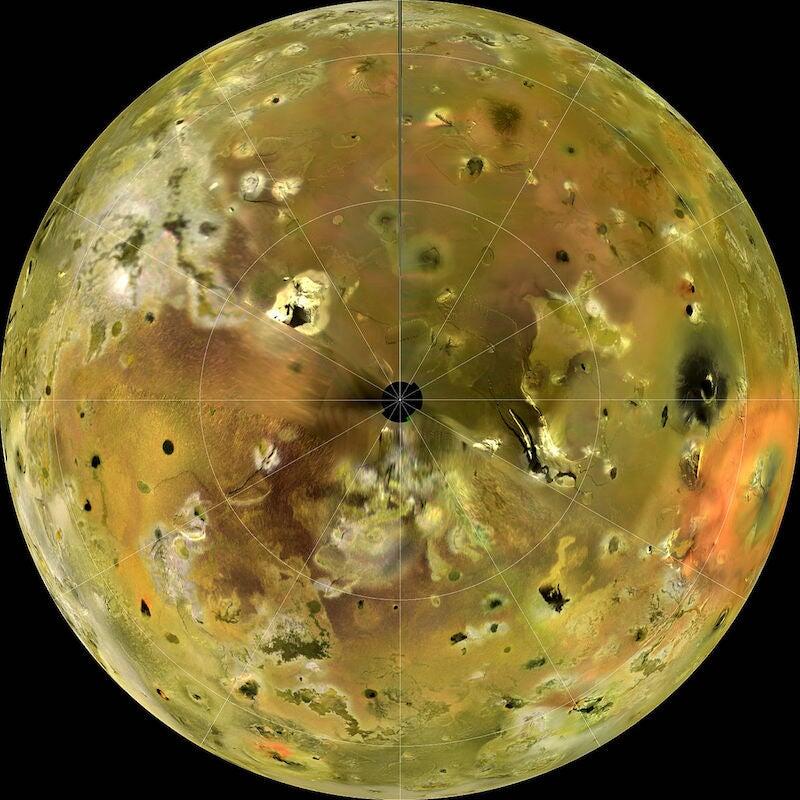
What Is Lava Made Of?
Looking down at a cooled lava flow, you see a black, glassy, vesicular (“spongy”) rock. The black color comes from the magnesium and iron-rich minerals, which are present in almost all types of lava flows. The glassy appearance means the lava cooled quickly. Its spongy appearance tells us how much gas was trapped and released from the lava as it flowed.
 Now for the chemistry. The chemistry of lava flows can tell scientists about where the lava came from beneath the surface. It also lets them learn a bit about how it flowed. Silicon is a good element to use to understand where the lava came from and how it flowed over the surface. Pahoehoe and a`a lava flows actually have similar chemistry, but they differ because of viscosity, or their stickiness (blocky is more viscous than a`a which is more viscous than pahoehoe). Blocky lava flows have a lot of silicon (over 55% by weight), which means they move slowly across the surface, similar to how a glacier moves on land.
Now for the chemistry. The chemistry of lava flows can tell scientists about where the lava came from beneath the surface. It also lets them learn a bit about how it flowed. Silicon is a good element to use to understand where the lava came from and how it flowed over the surface. Pahoehoe and a`a lava flows actually have similar chemistry, but they differ because of viscosity, or their stickiness (blocky is more viscous than a`a which is more viscous than pahoehoe). Blocky lava flows have a lot of silicon (over 55% by weight), which means they move slowly across the surface, similar to how a glacier moves on land.
How Hot is Lava?
Pahoehoe lavas tend to erupt at higher temperatures than a`a lavas. Now, hotter pahoehoe lavas are less viscous than a`a lavas, which should imply that they can flow faster. Even though pahoehoe lavas are hotter, they travel at speeds 10 times slower than a`a. They cannot travel as fast as a`a because pahoehoe lavas form from eruptions that slowly extrude lava onto the surface.
 The speed at which lava is erupted onto the surface has more of an effect on lava flow speed than temperature. Eruptions that rapidly extrude lava typically form rough a`a flows because their surfaces are always being disturbed by new lava. Lava flows that move faster are more likely to form a`a flows.
The speed at which lava is erupted onto the surface has more of an effect on lava flow speed than temperature. Eruptions that rapidly extrude lava typically form rough a`a flows because their surfaces are always being disturbed by new lava. Lava flows that move faster are more likely to form a`a flows.
Lava flows with high viscosity need more force to stay in motion. Without any forces pushing the lava forward, it will stop and cool. While high viscosity lavas are in motion, their surfaces tear as they cool. This is why a`a surfaces are rough, because when the lava was molten it had a high viscosity.
Additional images via Wikimedia Commons. Image of Io from NASA, via the Galileo and Voyager missions.

Io (one of Jupiter's moons) has the most volcanic activity of any planetary body in our solar system. Similar to volcanoes on Earth, Io's volcanoes mainly erupt lava that has a high level of silicates.
Be Part of
Ask An Earth and
Space Scientist
By volunteering, or simply sending us feedback on the site. Scientists, teachers, writers, illustrators, and translators are all important to the program. If you are interested in helping with the website we have a volunteers page to get the process started.
